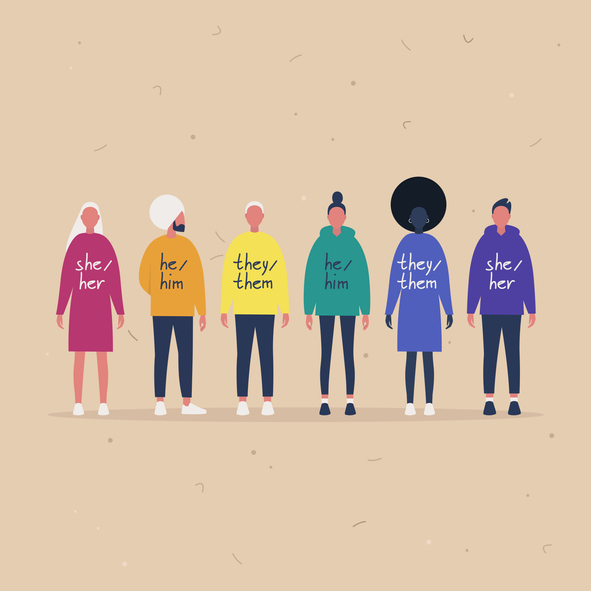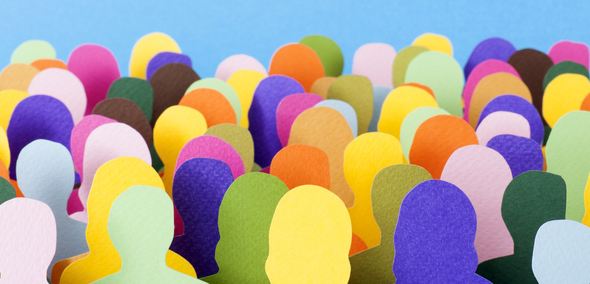Editor’s note: Matt Carmichael is VP of editorial strategy for market research firm Ipsos in North America and editor, What the Future.
 A couple of years ago, I was having lunch with some friends who had kids, nieces and nephews in high school. The conversation turned to a discussion of gender and I listened as they casually mentioned concepts I didn’t really know anything about at the time. They used terms like gender fluidity, gender nonbinary, gender spectrum and androgyny. After some explanation, one friend summed it up like this, “Basically the kids are expressing themselves however they want to and they frankly don’t care how you feel about it.” In other words, whether or not the grown-ups understood, cared, were freaked out by it or were on board, they were going to be whomever they wanted to be.
A couple of years ago, I was having lunch with some friends who had kids, nieces and nephews in high school. The conversation turned to a discussion of gender and I listened as they casually mentioned concepts I didn’t really know anything about at the time. They used terms like gender fluidity, gender nonbinary, gender spectrum and androgyny. After some explanation, one friend summed it up like this, “Basically the kids are expressing themselves however they want to and they frankly don’t care how you feel about it.” In other words, whether or not the grown-ups understood, cared, were freaked out by it or were on board, they were going to be whomever they wanted to be.
In popular music, the idea of gender fluidity has been around about as long as rock and roll itself. “Girls will be boys, and boys will be girls,” sang the Kinks in 1970s “Lola.” “It's a mixed up, muddled up, shook up world.” Around the same time Lou Reed was putting the story of transgender Warhol superstar Holly Woodlawn into “Walk on the Wild Side.” She “shaved her legs and then he was a she.”
Hitting fast-forward on our gender mixtape (we made one on Spotify), and artist “She/Her/hers” sings “ 'Cause if I use she pronouns, well, what does that mean? Am I reinforcing a gender binary that I don't believe in, that I don't adhere to?”
If you look at Google Trends, there was basically zero search traffic for terms like ”nonbinary” before 2016. Searches have spiked since then, but the volume is still low. This is an important conversation for us to have, but it’s still one not everyone understands or has much experience with.
In a global survey, Ipsos found that people are evenly split on whether or not gender is a male/female binary or more of a range of possible identities. In the U.S. 57% see it as an either/or. A significant number of men feel excluded from even joining this conversation for fear they’ll be attacked for their views.
If the public can’t agree on how to think and talk about these issues, what on earth is a brand supposed to do?
And it’s not like the binary male/female conversation is settled and simple either. Coinciding with this is the rise of the #MeToo and #TimesUp movements bringing a wide range of dynamics to the idea of gender in 2020. Increasingly, gender is part of the national conversation. And it’s not just about men and women but about the very nature of gender itself.
All of this sets the stage for a deep dive into the future of gender, which Ipsos explores in its latest issue of “What the Future.”
Based on that report and other research, let’s talk about the four ways brands can incorporate gender messages in marketing and advertising, what the risk are and why they can be worth taking for your brand.
Gender as the purpose
Ipsos’ Pedr Howard, a senior vice president in its Creative Excellence practice, sees four key ways to approach gender in advertising and marketing. The first is pure purpose-driven marketing. Take the Olay ad which ran in Super Bowl LIV promoting #MakeSpaceForWomen with a call to tweet using the hashtag to raise money for Girls Who Code. It’s a commercial about the purpose, not the product.
Gender as the solution
 The second is to have your product be seen as part of the solution to gender issues. The (in)famous Gillette spot from 2019 called out the toxic aspects of “boys will be boys” culture but offended or perhaps triggered many men and many of its customers in the process. Despite what seemed to be a focus on men treating women (and each other) poorly, a vocal group on social media felt personally offended that their masculinity was being threatened.
The second is to have your product be seen as part of the solution to gender issues. The (in)famous Gillette spot from 2019 called out the toxic aspects of “boys will be boys” culture but offended or perhaps triggered many men and many of its customers in the process. Despite what seemed to be a focus on men treating women (and each other) poorly, a vocal group on social media felt personally offended that their masculinity was being threatened.
If you’re thinking, “Why take the risk?” you’re not alone. Nearly six in 10 marketers think that the risks are greater than ever in terms of taking a stand on sociopolitical issues. They’re not necessarily wrong. Members of the “Miracle on Ice” 1980 U.S. Olympic hockey team which stunned Russia to take home the gold medal in one of the most memorable and unifying moments in U.S. sports history were recently in the news. They were suddenly thrust back into the spotlight when some of them donned red MAGA hats onstage at a campaign rally for President Trump. The backlash was swift with people sharing comments like, “You defeated Russia in 1980 and today Russia defeated you.”
But the reason to take the risks is clear. Nearly all (91%) Millennials say they have switched brands due to social issues. And that’s why three quarters of marketers (77%) think the benefits of taking a stand are greater than ever. Unlike most of our survey questions, in this case both groups, with considerable overlap, are probably right.
Gender as the hook
Renault’s recent spot focused on the journey of same-sex couple as the narrative arc for its ad, without making a specific political statement about it. This kind of approach serves to normalize the situation – which today is still enough to generate buzz – but doesn’t make it a focal point or tie the product to the message directly.
In the “What the Future” report, we spoke to Wieden + Kennedy creative director Azsa West. She discussed whether products need to be gendered at all. Her thoughts, confirmed by our data, is … sometimes. She told Ipsos, “For some people, it is very important that the deodorant brand that they use does have a strong point of view attached to it. Like, maybe masculinity is very important to their identity. There are ways to represent in ways that do feel more conventional, that are still valid.”
In other words, some people feel strongly about some products that they should be marketed to their specific gender. But, she points out, the key is to also make sure your products and messaging also appeal to people of other gender representations, or at least that you have options for the full range of gender expression including those who don’t want gendered products in that category at all. 
So what?
There’s other reason to be mindful of gender in your ads is, frankly, it matters. We interviewed Shelley Zalis, CEO of the Female Quotient and co-founder of the SeeHer initiative, whose Gender Equality Score we now bake into all of our ad testing work. We explored the role of advertising and representation with her in a series of survey questions. Half of the people surveyed think that ads are showing men and women still in traditional gender roles. But the stat that jumped out is that nearly six in 10 think that commercials have the power to change how we perceive gender roles. Ads tend to reflect society, but society can also in turn reflect ads creating the potential of a virtuous cycle of change. That change can be positive for the brands crafting more inclusive messages that reflect the diversity of our culture. And that in turn, benefits society as a whole.
The danger, of course, is that marketers also increasingly have the ability to micro-target messaging based on any demographic or sociographic piece of data possible. That can lead to a world where every ad we see is specifically targeted to showcase subjects that are nearly identical to the individual viewer.
Ipsos’ Pedr Howard sees the danger. “What if the most effective commercial to men only features men in prominent roles and the most effective commercials to women only features women as the hero? The danger is that if marketers purely chase immediate results, creative might morph such that an individual see reverses stereotypes they already believe instead of showing a real world that is more diverse than many actually see every day.”
But given that people believe that ads can impact our views as a society, the potential risk of backlash seems to pale in comparison to the rewards for brands that take a stand and align their values with their customers, who increasingly are looking for brands that authentically walk the walk with them – even if that walk is on the wild side.
